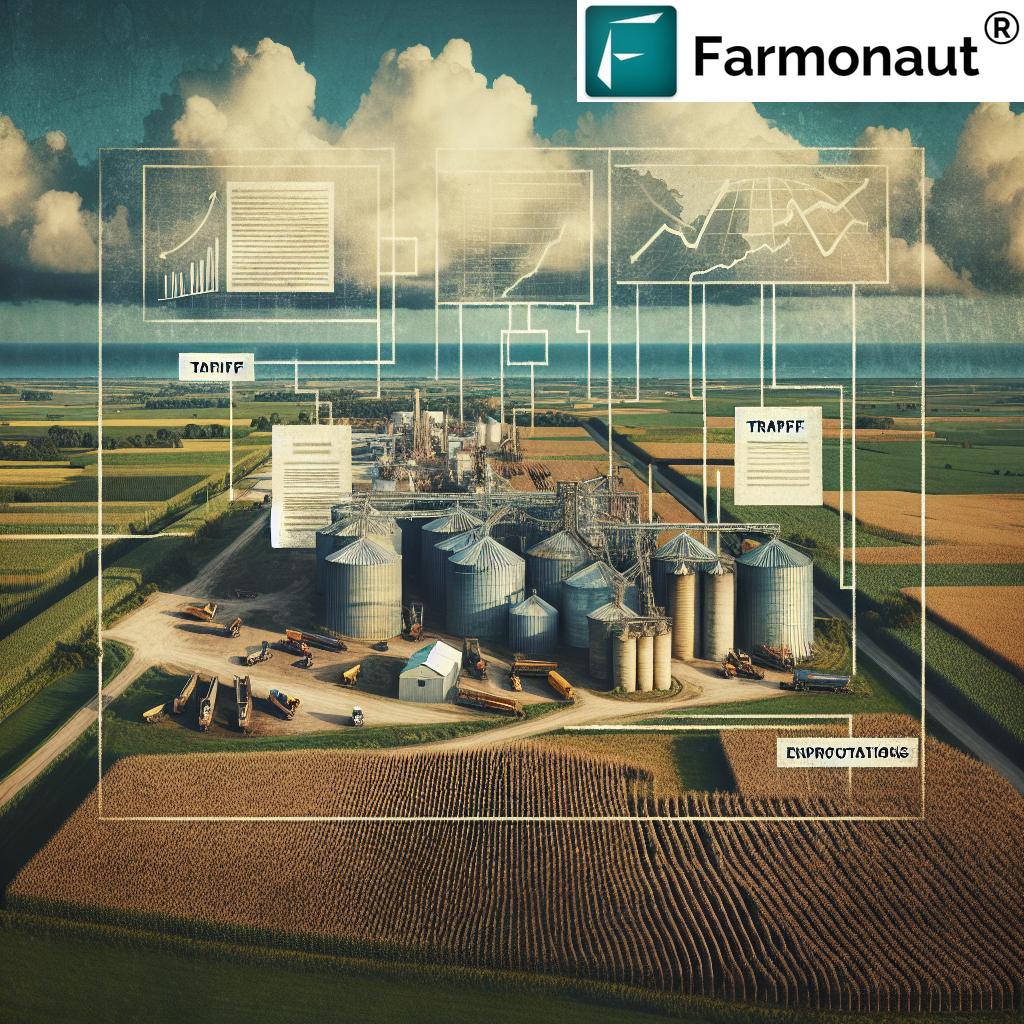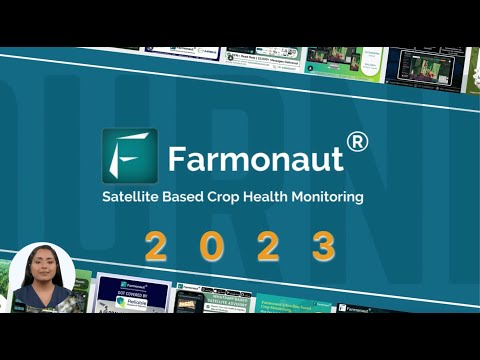Indiana Farm Trade Challenges: 5 Powerful Impacts of 2024 Tariffs
“Indiana’s 2024 agricultural exports face up to 15% decline due to new tariffs, threatening $4.6 billion in trade.”
Context: Understanding the Current Indiana Farm Trade Challenges
In 2024, Indiana stands at the seventh position among the largest agricultural exporters in the United States—a feat built on decades of innovation and resilience in the state’s agricultural sector. However, as we navigate this pivotal year, the horizon is clouded with uncertainty stemming from trade negotiations and evolving tariff proposals. For communities in Noblesville, and farm counties across Indiana, these disruptions are more than statistics—they are daily realities for thousands of farmers, affecting everything from exporting corn and soybeans to business planning, prices, and our ability to feed other countries.
We, as part of Indiana’s agricultural industry, acknowledge that managing risks is an inherent part of our profession. Still, the current landscape presents new challenges and profound economic implications for those who grow our food and steward our land. Trade uncertainty now takes center stage, impacting both the short-term and long-term decisions of producers and stakeholders across the value chain.
In this comprehensive analysis, we will break down the five most powerful impacts of the 2024 tariffs on Indiana’s farm trade, highlighting the implications for market access, crop inputs, consumer prices, and the resilience of our agricultural economy. Our exploration will incorporate insights from local economists, farm organizations such as the Indiana Farm Bureau, and industry thought leaders from Indiana University’s Kelley School of Business.
Tariffs—essentially a tax on imported or exported goods—directly affect the balance between our capacity to sell farm products abroad and our production costs at home. Whether we are talking about staple crops like corn and soybeans or value-added products such as pork and dairy, the waiver or imposition of trade barriers can mean the difference between profit and loss for Indiana farmers. The ultimate burden of these policies is rarely contained within farms alone—it touches consumers in grocery aisles, shapes business horizons, and, most critically, challenges our collective ability to maintain economic resilience.
5 Powerful Impacts of 2024 Tariffs on Indiana Farm Trade Challenges
As tariffs take effect and negotiations continue to waiver in 2024, Indiana’s agricultural sector is facing multifaceted disruption. Here, we explore the five most significant impacts reshaping our state’s market conditions for US farmers and agricultural exporting.
1. Market Access Disruption and Export Decline
A paramount Indiana farm trade challenge in 2024 is the erosion of guaranteed access to key countries that import our agricultural products.
- With increasing uncertainty over export agreements and fears of retaliatory tariffs, our vital partners such as Canada, Mexico, and China have started to either diversify suppliers or impose their own trade barriers on goods from Indiana.
- Estimates suggest a 15% decrease in exporting volumes, equating to as much as $700 million lost from Indiana’s projected $4.6 billion agricultural trade value in 2024.
- Products most at risk include soybeans, corn, and pork. These are crops and commodities where Indiana’s competitive pricing and dependability historically ensured steady sales, sustaining standard of living for farm communities and supporting global dietary improvements.
The loss in market access is not simply a short-term blip: it jeopardizes our position as exporters, weakens our buyers’ trust, and can force us to sell at lower prices or seek less lucrative markets.
2. Planning Uncertainty and Economic Risks for Indiana Farmers
In an industry that relies on planning horizons spanning months and years, rising uncertainty can undermine the efficacy of business decisions. As Andrew Butters from the Indiana University Kelley School of Business explains, the repercussions of trade disruptions in agriculture go beyond this season’s harvest.
- Farmers are postponing investments in equipment, seeds, and land improvements due to unpredictable policy shifts and unresolved negotiations.
- Unclear export prospects translate into agricultural business planning uncertainty, stifling innovation and risk-taking.
- This also reverberates through supporting businesses, from local suppliers in Noblesville to international grain merchants.
The result? Economic risks for Indiana farmers are heightened, with many producers stuck in a holding pattern, unable to capitalize on new opportunities or efficiently manage their existing operations.
3. Rising Input Costs and Farm Profitability
Tariffs not only impact revenues from exporting crops like corn and soybeans, but they often trigger cost increases for crop inputs—fertilizer, seed, farm machinery—which are sourced globally.
- Farmers, like Jim Flanders, express concerns that rising input prices (“crop inputs coming in from foreign countries at a reasonable price”) could cut into margins for the 2026 season and beyond.
- These costs can spike as much as 8-12% depending on the supply chain, directly reducing farm profitability and potentially leading to less competitive pricing in future markets.
To combat this, precision agriculture technologies—such as Farmonaut’s real-time, satellite-powered monitoring and decision-support tools—can help manage limited resources more efficiently and reduce unnecessary expenditure on inputs.
Access to crop loans and insurance is critical in such turbulent times. Farmonaut’s satellite-based verification improves loan approvals and reduces fraud in agricultural insurance, giving farmers more financial flexibility to weather trade disruptions.
4. Effects on Food Prices and Consumer Burden
One often overlooked impact of tariffs on farmers is their indirect effect on consumers—the burden of increased costs for agricultural goods typically gets passed down through the supply chain.
- According to leading economists, tariffs act as a tax on trade, potentially raising the price of everything from groceries to manufactured goods (purchases like washing machines or food items).
- This “tariff effect on food prices” means families in both Indiana cities and rural towns may face higher meal costs, ultimately lowering standard of living.
- It also weakens consumer trust in supply chains, especially when transparency is lacking. For this reason, blockchain-based solutions such as Farmonaut’s traceability services help ensure product origin and journey are verifiable, reassuring both retailers and shoppers.
5. Long-Term Strategic Shifts in Indiana Agriculture
With ongoing trade policy and market access uncertainty, Indiana’s agricultural businesses are assessing long-term changes to their operations. This involves both adopting new technologies and exploring alternate markets.
- Growers are seeking ways to diversify into specialty or premium crops, invest in sustainable farming, and leverage data-driven insights for smarter business decisions.
- Adopting platforms offering large scale farm management solutions, such as Farmonaut’s fleet and resource management tools, enables better oversight of plantation efficiency and environmental compliance.
- Carbon footprinting tools—available at Farmonaut Carbon Footprinting—provide both cost savings and open up new export markets where sustainability standards are paramount.
As new policy directions emerge, the actions Indiana farmers take now will shape future generations’ ability to adapt, compete, and thrive in an ever-globalizing marketplace.
Impact Comparison Table of 2024 Tariffs on Indiana’s Agricultural Exports
This table provides a concise overview of major crops and commodities affected, the estimated scale of change due to 2024 tariffs, and the market challenges faced in each export destination.
How Farmonaut Empowers Indiana Farmers Amid Trade Uncertainty
As our agricultural community adapts to these turbulent trade conditions, leveraging innovative technology is increasingly pivotal. Farmonaut is a pioneering agricultural technology provider dedicated to making precision agriculture accessible and affordable for farmers in Indiana and beyond. Our platform addresses key challenges amplified by tariff disruptions, economic uncertainty, and the imperative to optimize every acre and dollar.
Farmonaut’s Technology Pillars:
- Satellite-Based Crop Health Monitoring: Using up-to-date multispectral satellite imagery to detect crop variability, soil moisture, and vegetation vitality for smarter irrigation, fertilization, and pest management.
- Jeevn AI Advisory System: Real-time, AI-driven personalized advice to maximize yields and efficiency by dynamically responding to weather and field data.
- Blockchain-Based Product Traceability: End-to-end food supply transparency, minimizing fraud and building consumer confidence—vital in tariff-driven export markets.
Learn more about Farmonaut Traceability Solutions. - Fleet & Resource Management: Optimization tools for overseeing machinery, personnel, and logistics—a game-changer in minimizing operational costs amidst rising input expenses.
Explore Fleet Management tools suited for agribusinesses. - Carbon Footprinting: Tools for concrete emission monitoring, critical for compliance and entering new “green” export destinations.
Optimize with Farmonaut’s Carbon Footprinting platform. - API Integration: For developers or research organizations, Farmonaut API and
Developer Documentation
provide seamless access to satellite and weather intelligence to build custom solutions.
Seamless Accessibility & Subscription Flexibility
Farmonaut’s tools are available via browser, Android, and iOS—supporting businesses of every scale. Subscription packages are tailored for small family farms, large agribusinesses, and government agencies. This modular approach ensures everyone in Indiana’s farm ecosystem can afford the best data-driven management, regardless of their acreage or resources.
Benefits at a Glance
- Real-time precision farming: Cut costs by targeting fertilizer and irrigation only where—and when—it’s needed.
- Credibility & Compliance: Demonstrate traceable, sustainable production—a key for tariff-affected export markets.
- Enhanced decision-making: Reduce agricultural export uncertainty 2024 by basing choices on up-to-date analytics, not guesswork.
For growers exploring large scale farm management upgrades, Farmonaut’s Agro-Admin App streamlines enterprise monitoring and compliance. If you’re managing crop plantation or forestry operations, visit Farmonaut’s Plantation & Forest Advisory for more ways to optimize resources.
“Over 60% of Indiana farmers report increased market uncertainty from 2024 tariff changes, impacting long-term planning.”
Agricultural Business Planning Uncertainty: Key Insights
The current environment for Indiana’s agriculture is defined by a convergence of rising risks and shifting decisions on every farm. Negotiations at national and international levels often seem far removed from daily realities in Noblesville or Rush County—but their outcome may define a generation’s fortunes. Let’s review key themes that business owners and farm families are managing in the face of agricultural export uncertainty 2024:
- Long-Term Capital Investment: Unclear market access makes major purchases—like new combines, irrigation pivots, or barns—a gamble. Instead, businesses are opting for incremental upgrades and smart technology adoption, favoring flexible, scalable tools (like Farmonaut’s satellite-based subscriptions).
- Exporting Corn and Soybeans: Tariff volatility is causing some Indiana producers to shift their acreage allocations year-to-year, seeking alternate crops or exploring local direct-to-consumer markets to avoid instability in global sales.
- Standard of Living and Rural Communities: With each new tariff proposal, concerns grow about the implications for local employment, community services, and the overall resilience of agricultural towns. The ability to sell globally supports local economies and improves diets abroad.
- Policy Advocacy Efforts: Organizations such as the Indiana Farm Bureau continue to call for clarity in trade policy—pushing for agreements that offer predictable, transparent, and fair frameworks for our farming future.
Frequently Asked Questions (FAQ) about Indiana Farm Trade Challenges & 2024 Tariffs
What are the main Indiana farm trade challenges in 2024?
Key challenges include volatile trade policy, increased tariffs affecting major crops (corn, soybeans), decreased market access in key importing countries, and rising costs for critical crop inputs. The result is pronounced economic uncertainty impacting all stages of farm business.
How do 2024 tariffs affect prices for consumers?
Tariffs act as a tax—raising the burden on imported/exported goods. As a result, Indiana residents may notice higher costs in grocery purchases and other household items. The consumer ultimately absorbs part of the increased costs.
How can farmers manage economic risks and business planning uncertainty?
Adopting advanced crop monitoring (such as Farmonaut’s satellite-based solutions), improving financial resilience with verified crop loans (learn more), and focusing on supply chain transparency are all key strategies.
Where can I find tools for fleet management or traceability in agriculture?
Visit the Fleet Management and Traceability pages for details on how Farmonaut supports efficient logistics and transparent farm-to-consumer supply chains.
Can Farmonaut help meet new sustainability requirements for exports?
Absolutely. Farmonaut’s Carbon Footprinting platform provides data-backed emission monitoring and resource optimization, helping Indiana farmers enter sustainable and premium markets.
Conclusion: Building Resilience Amidst Uncertainty
The 2024 tariffs represent a defining moment for Indiana farm trade challenges. This year’s landscape shows the high costs of policy uncertainty and the far-reaching implications for every link of the agricultural chain—from Noblesville producers to worldwide consumers relying on our exports for their daily diets.
While we cannot always control trade disruptions or swiftly resolve complex global negotiations, we can invest in actionable tools, build resilience, and advocate for transparent, data-driven market conditions for US farmers. Platforms like Farmonaut offer affordable, scalable solutions—satellite-driven analytics, AI-based guidance, blockchain transparency, and seamless fleet management—to empower Indiana’s agricultural professionals for whatever the future holds.
Let us move forward—together—with a commitment to smarter planning, sustainable growth, and stronger advocacy. By equipping ourselves with the best insights and innovations, we can continue to sell and export Indiana-grown crops, support our rural economies, and raise the global standard of living for all.






















